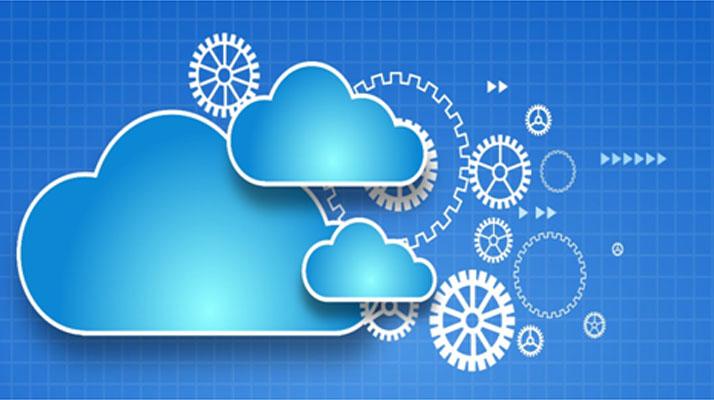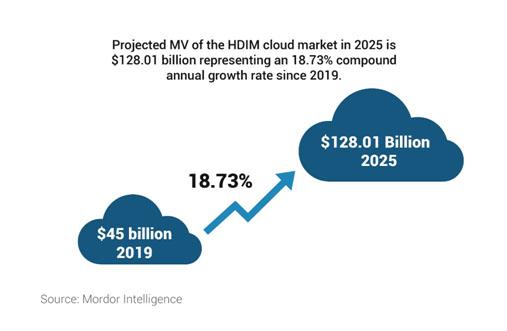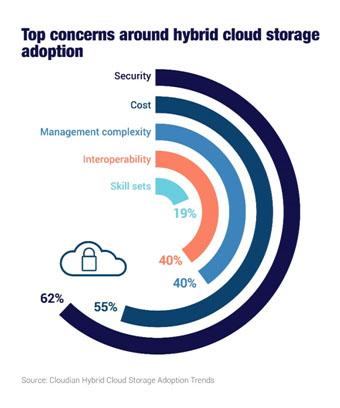The purpose of IT Infrastructure and ITES is to provide continual services, without disruption and deliver best-in-class customer experience. This is only possible when the triad of end-users, customers and employees, all receive consistent response and support. Solely relying on legacy infrastructure to maintain digital assets is a thing of the past. Organisations are restructuring and automating their IT Infrastructure at a faster pace than ever deemed prior. Enterprises are drawn to a system where they can leverage the advantages of their heritage systems as well as newer technologies with more advanced features like cloud and AI.
IT infrastructure modules are no longer static entities; they are acknowledged as dynamic integral units and organisations are moving away from on-site IT Infrastructure to Cloud-enhanced systems that is better suited to the times and comes with short term and long term perks like ease-of-access, cost-efficiency and low maintenance owing to the lack of physical support infrastructure.
The Selection: ‘Critical Decision’
The most difficult part of a journey is staring it. For organisations, deciding on which systems are to stay in the legacy mode and which are to be moved to the cloud is a haunting question. The key is to identify the advent of the journey towards cloudification of systems and have a defined point of inflection that will pace up the journey of adoption.
It depends on the type of business and the kind of applications that are being used in the environment for one to decide which cloud is to be adopted and which application will be shifted first to the cloud.
There are many proven and tested approaches that are used by organizations to embark on the cloud journey, such as,
- Moving the test and Dev environment to the cloud
- Moving some Disaster Recovery systems to the cloud
- Moving specific non-business workloads to the cloud
- Consolidating distributed systems into a single large compute environment
The cloudification of infrastructure helps the ITOPS team in managing the cloud infrastructure seamlessly and focusing more on the legacy systems migration to the new platforms by restructuring or redeploying them inthe new environment.
The Transition: ‘Comfort Zone’
Companies are enthusiastically starting their cloud journey and they are systematically making the transition of a portion of the infrastructure to cloud while some are still using the current legacy systems and the rest are migrated and maintained on private and/or public clouds, this is where most firms consider to be their comfort zone. This partial Cloud adoption provides leeway to companies where the cost of replenishing their phasing out or phased out physical infrastructure significantly out-weighs the monetary gains of implementing an entirely cloud-run configuration. On the other hand, some organisations may face challenges in adopting cloud because of restrictions imposed by governing regulatory bodies, fear of data-breaches, concerns over compliances &security factors.
Post-Adoption Management: ‘Continual Journey’
This ‘best of both worlds’ scenario is what led to the development of “Hybrid Digital Infrastructure Management” (HDIM), these evolved systems allow enterprises to maintain a steady balance of physical/on-site IT assets and private/public cloud-based infrastructure while workloads keep growing with the business scaling up. Organisations are thus able to take advantage of the security and compliance benefits of their own legacy systems while at the same time have their cloudified infrastructure that is easily accessible and manageable.
According to Gartner, around 20% of enterprises are projected to employ HDIM tools to optimize their workload and IT configurations by 2022.
The best part of Hybrid Digital Infrastructure Management is that it incorporates both on-site heritage systems as well as the latest innovations. The hybrid environment is best for DevOps tools to flourish and deliver better results. HDIM also reduces complexities associated with migration of entire configurations to an online shared platform by making the move to the new system smooth and uneventful.
What does HDIM entail?
Hybrid IT Management monitors all assets 24×7 across domains and utilizes predictive data analytics backed by Artificial Intelligence. Hardware probes capture data from physical assets storage, servers, and networks while digital assets are monitored by software probes that access this information without disrupting the running of devices. This information is gathered with or without the involvement of agents and is cross-referenced, evaluated, and everything from the largest to most miniscule amount of Information that is gathered by the HDIM systems is virtually recorded, analysed and reported for action to make sure they are running efficiently. This data is recorded for future reference and can be retrieved at any time. Hardware and software probes also alert the system in the event of security breaches and illegal access attempts.
Is it all Good?
Infrastructure when Managed by HDIM tends to witness a drastic improvement in connectivity and collaboration efficiency of the ITOPS team and makes remote management easy for operations. While shared platforms give diversity they also enhance scalability and plays the role of a catalyst in business growth.
With HDIM, automation of major processes can be deployed easily. Cost involving maintenance of assets and development is reduced with the adoption of Hybrid Digital IT Management.
With so many benefits also come a host of complexities associated with HDIM. The concern of data breaches and cyber attacks is a constantly in question, organisations hence opt to retain critical and important business-data centric configurations under legacy systems.
Continuous examination of Hybrid systems is required to ensure there are no data audit errors. There are major challenges linked to having Hybrid system-management considering the fact that it is a daunting task to handle ever-growing data across multiple systems that are poles apart in terms of physical infrastructure. The Management of Hybrid IT systems also requires niche skills that may drive up talent development and acquisition costs. Also, weightage needs to be given on allocating the right bandwidth to run these systems as personal devices from various locations may connect to the systems in the current and post-pandemic scenario.
The long-term benefit of an HDIM is truly attractive and it certainly will become the new standard of running DCOPS in the future. We are seeing more and more organisations turning to Hybrid IT for their IT infrastructure Management needs. HDIM brings to the table, the superior aspects of both heritage systems as well as newer technologies and proves to be effective on both fronts and drives innovation with minimal disruption.



